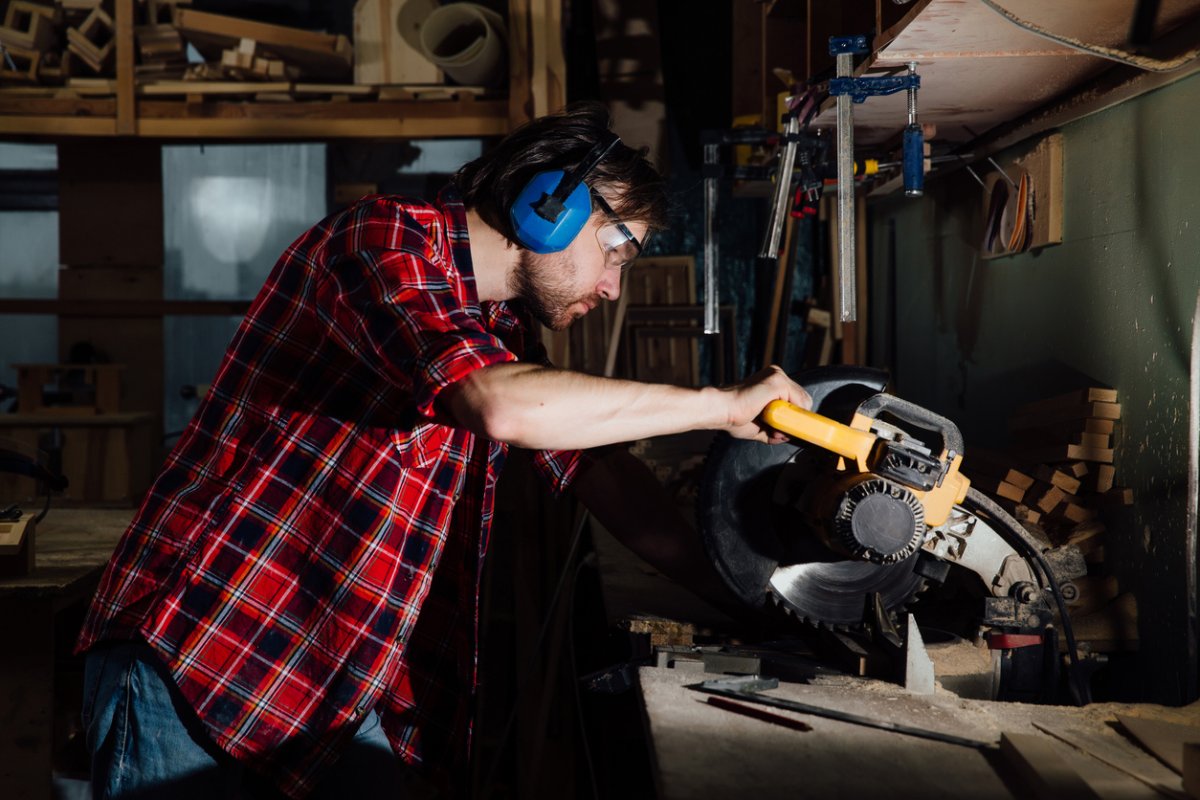

We may earn revenue from the products available on this page and participate in affiliate programs. Learn More ›
The sounds of grinding, vibrating, buzzing, and boring may be welcome signs of progress and accomplishment to DIYers, woodworkers, and professionals, but all that racket generated by our trusty power tools poses some risk. Noise-induced hearing loss (NIHL) takes years to develop and affects about 40 million U.S. adults aged 20 to 69, according to the Centers for Disease Control. For those adults, voices begin to sound like mumbling, and higher-pitched sounds become hard to hear.
The damage can be caused by a singular extremely loud event or by an accumulation of lower-level events. When we experience sound, tiny bones in the ear and eardrum vibrate, and these in turn vibrate little hair cells called cilia in the inner ear. Over time, loud noises can permanently damage the cilia.
Unlike other construction measurements, sound is measured in a logarithmic scale of decibels (dBA). An increase in 10 decibels is 10 times more intense, which humans perceive as twice as loud. However, a change from 60 dBA to 120 dBA is actually 1 million times more intense, but it’s perceived as 64 times louder to us. For reference, 0 dBA is the threshold of hearing, a normal conversation is about 60 dBA, a construction site is usually about 100 dBA, and 140 dBA is the threshold of pain for humans.
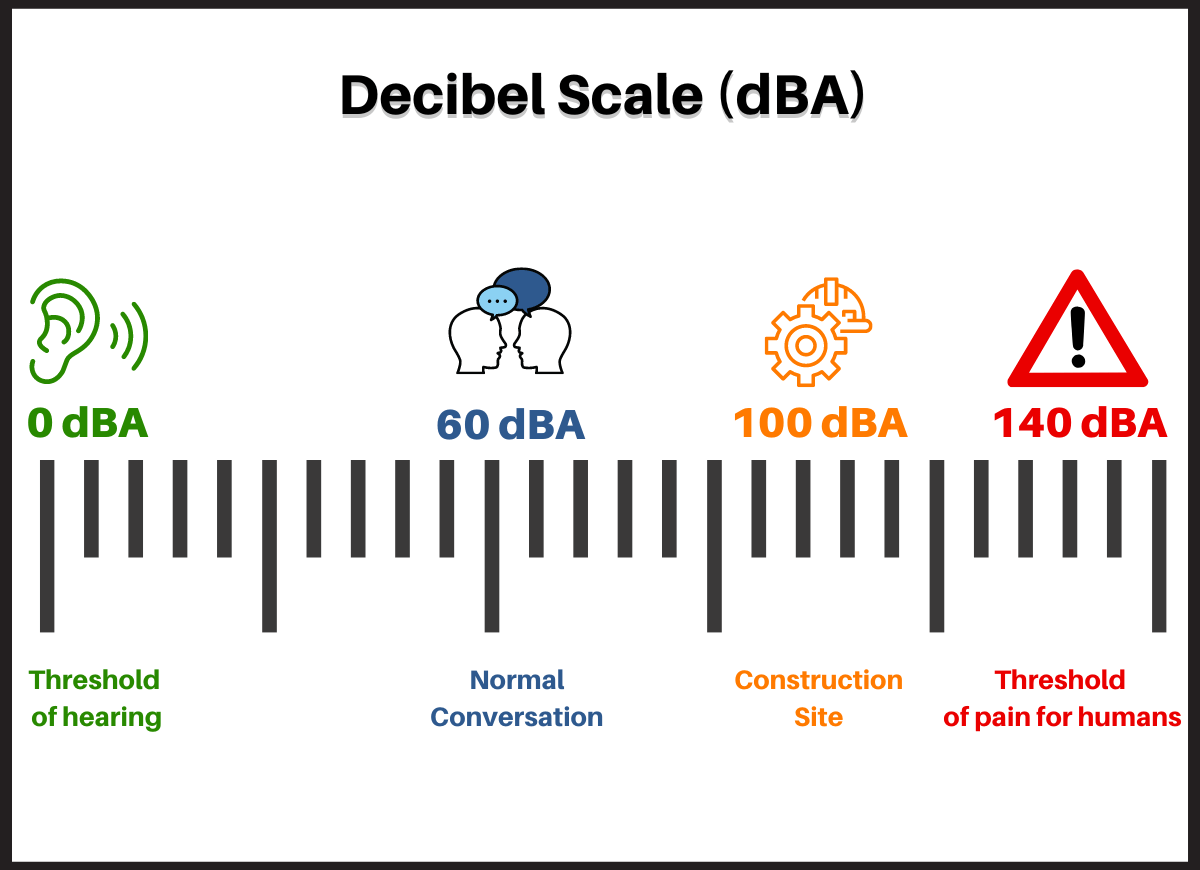
The National Institute for Occupational Safety and Health (NIOSH) recommends hearing protection starting at 85 dBA, and the Occupational Safety and Health Administration (OSHA) allows 8 hours of exposure to 90 dBA. While OSHA allows 2 hours of 100 dBA noise, NIOSH recommends just 15 minutes. Since most common power tools range from about 80 dBA to 120 dBA, hearing protection is often recommended. It’s important that hearing protection like earplugs or earmuffs be well fitting and well maintained to maximize the benefits.
Read on for a list of some of the loudest power tools commonly found in a workshop, along with quieter alternatives that will help reduce the noise.
1. Hammer Drill: 116 dBA
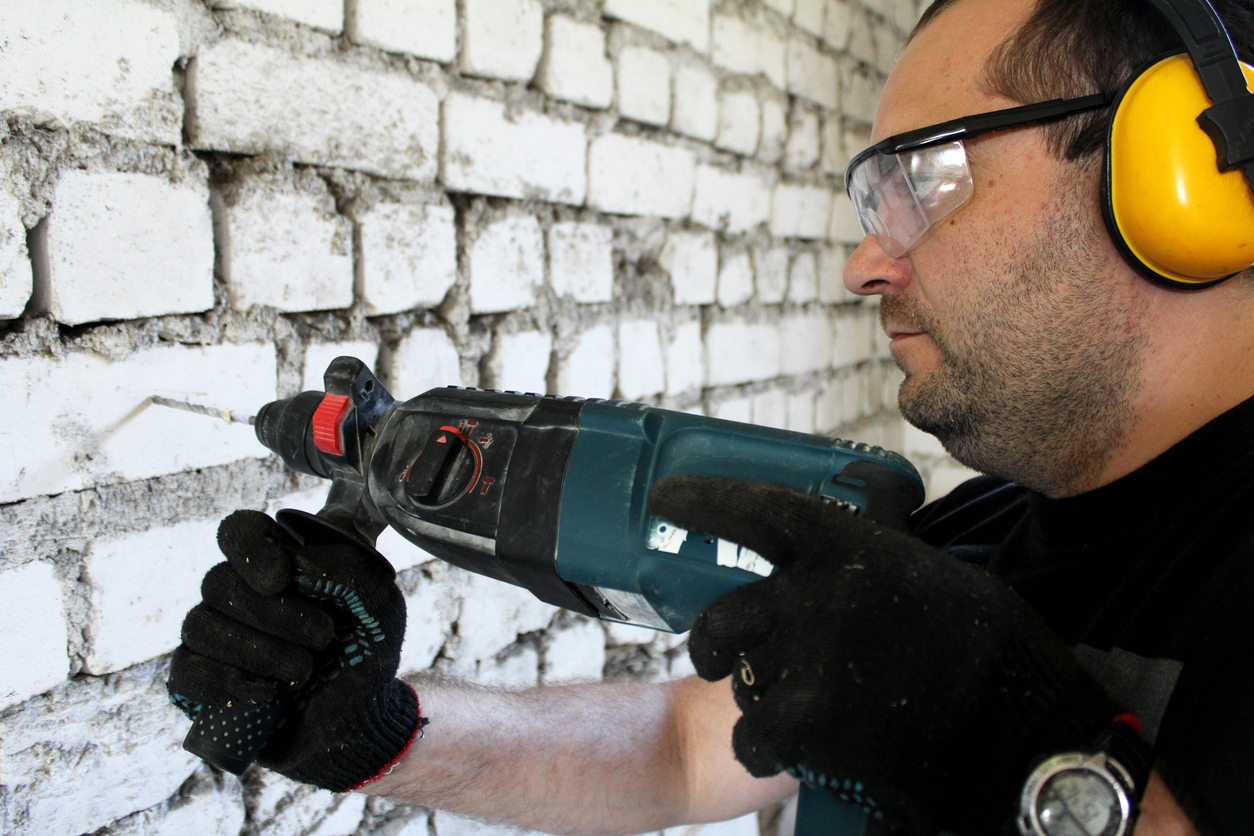
A hammer drill is a go-to tool for boring holes and drilling into tough materials like concrete, stone, and brick. Because the tool is used for heavy-duty work, it’s also one of the loudest tools in a DIYer’s arsenal. The loudest hammer drills clock in at up to 116 dBA, but on average a hammer drill’s noise level rates at least 105 dBA.
Quieter alternative: Among hammer drills, brushless versions such as the Milwaukee M18 Hammer Drill, a favorite in our researched guide to the best hammer drills, tend to be quieter.
RELATED: The Best Power Tools and DIY Products Tested in 2022
2. Circular Saw: 113 dBA
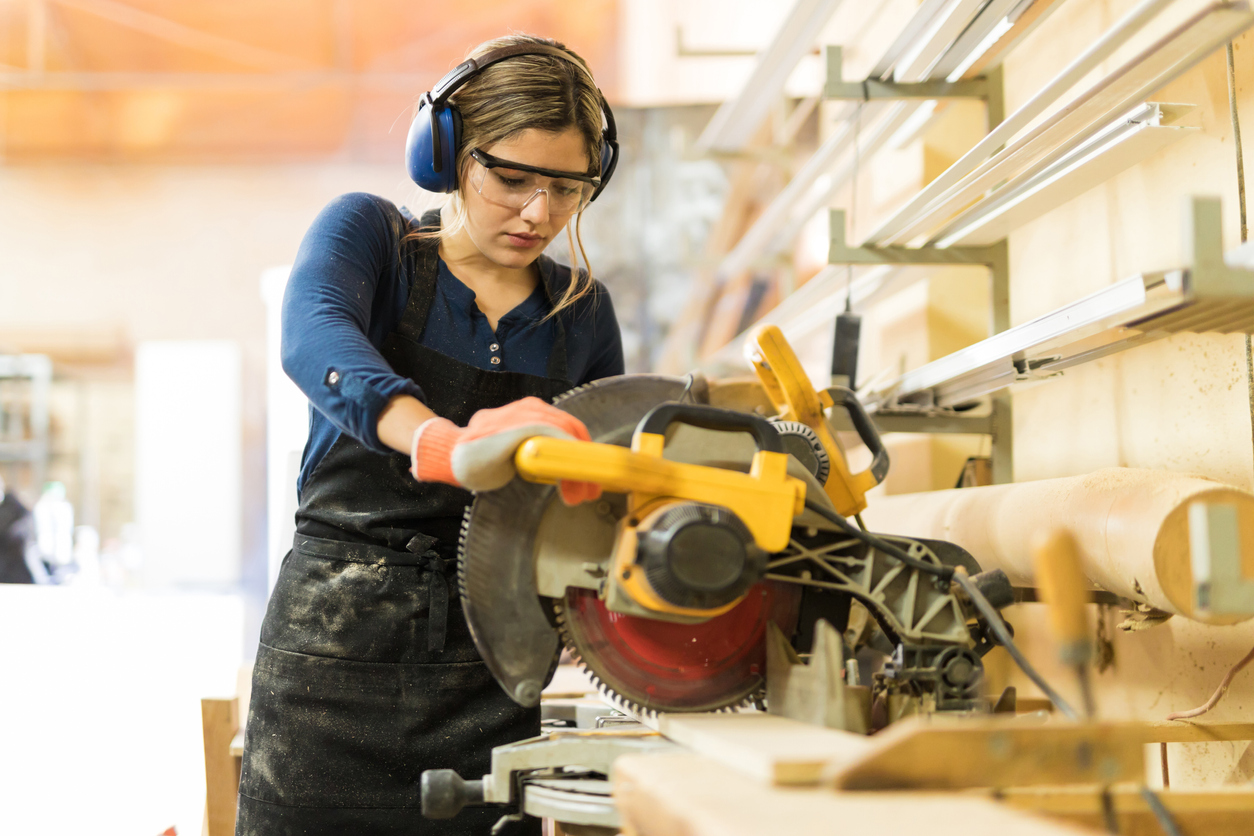
Circular saws are handy and portable, ideal for making quick cuts of dimensional lumber and sheet material. However, their motors are often louder than other workshop saws like table saws because they use a different kind of motor. Unlike table saws, which typically use a belt drive and induction motor, circular saws rely on a universal motor, which is what a vacuum cleaner uses. Circular saws usually produce about 108 dBA, but tough material and a dull blade can create even more noise.
Quieter alternative: At 87 dBA, the Makita 5402NA 16 5/16-inch Circular Saw is one of the quietest on the market.
3. Miter Saw: 113 dBA
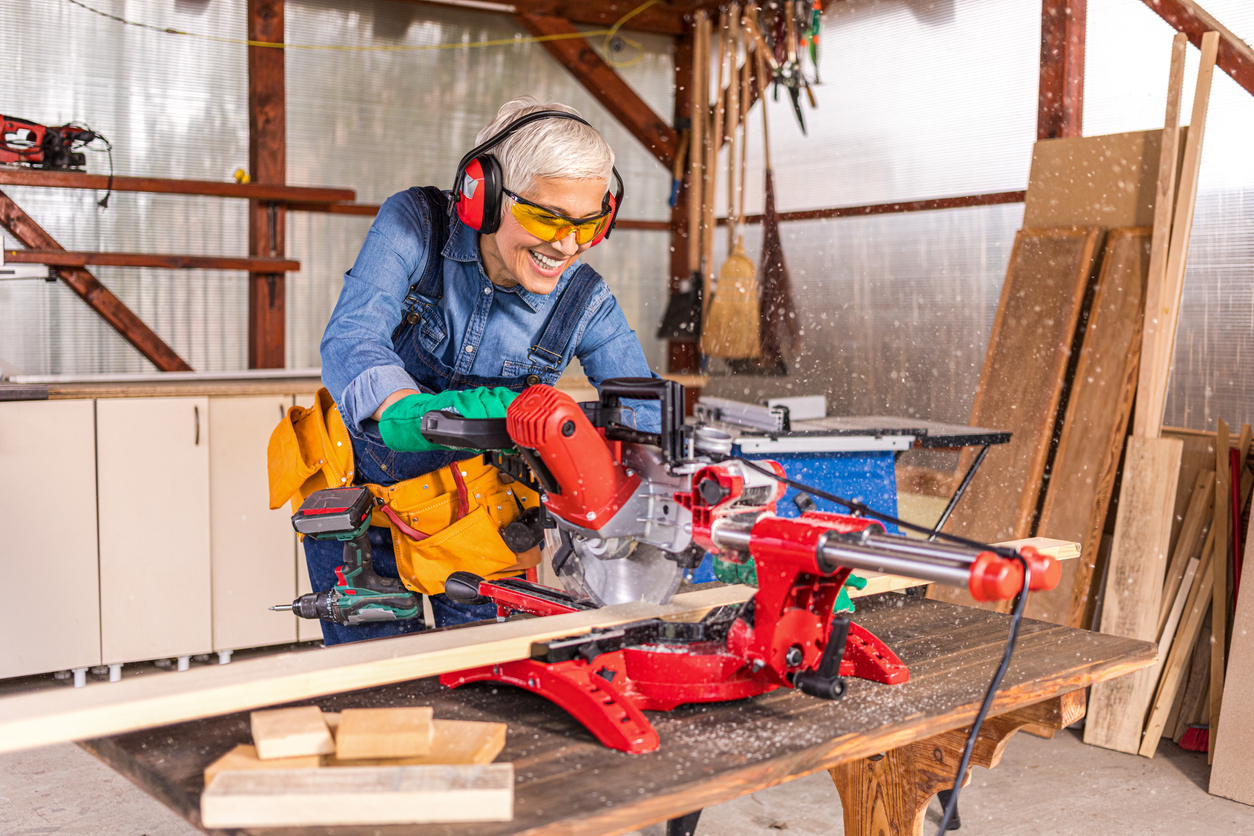
Along with the table saw, a miter saw is usually a cornerstone of the DIY workshop. Used for cutting dimensional lumber to size, sliding compound miter saws can cut miters, bevel, and cut wider boards. Like circular saws, they run on a universal motor, so they tend to be loud. When NIOSH tested the sound levels of 200 tools, the loudest miter saw was 113 dBA. While noise is to be expected, if your miter saw is making a new grinding or squealing sound, it’s a sign that the tool’s brushes or armature needs to be fixed.
Quieter alternative: One of the quietest saws on the market is this Bosch miter saw, a favorite in our guide to the best miter saws we tested this year.
RELATED: Proceed With Caution: 12 Power Tools That Can Kill You
4. Reciprocating Saw: 112 dBA
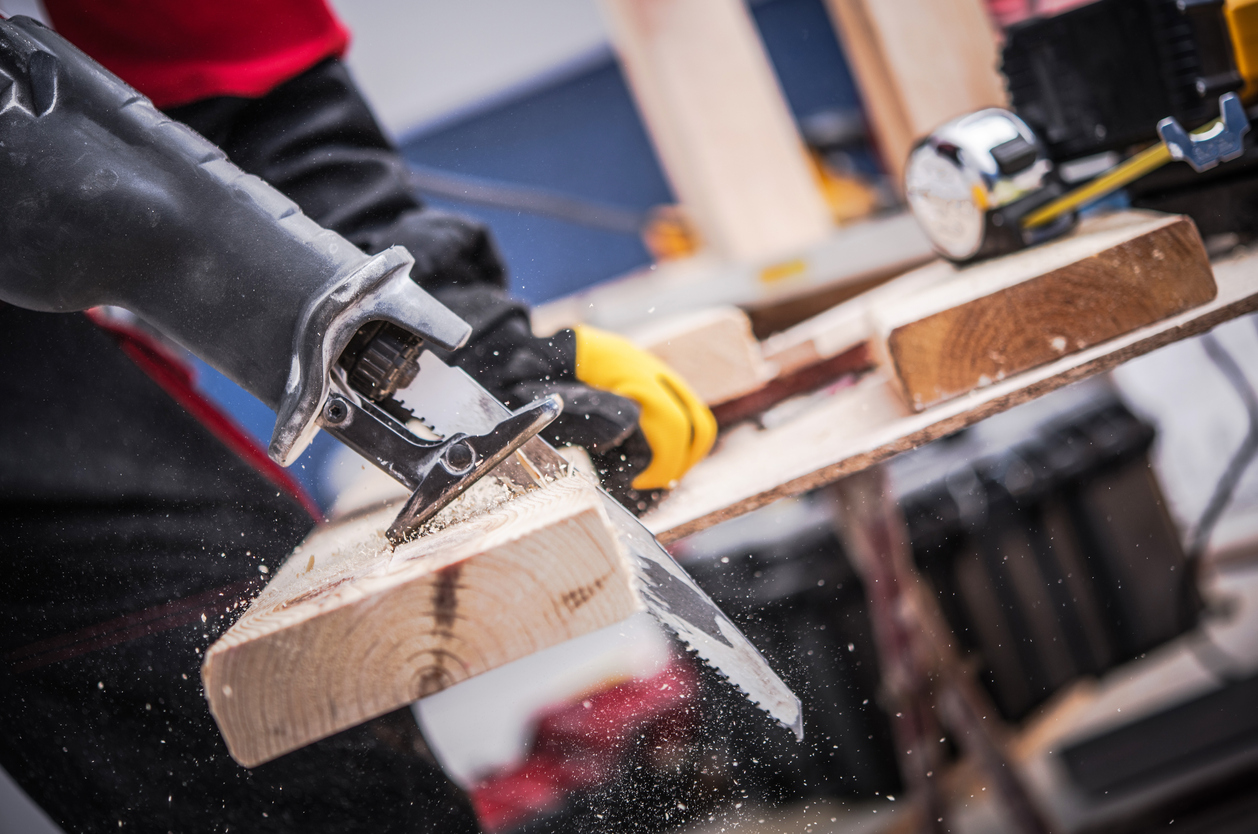
A popular tool for demolition, the reciprocating saw can cut through wood and metal. They aren’t as precise as other saws, but they are powerful and come in both corded and cordless options. Usually around 106 dBA, they can be as loud as 112 dBA, and cutting through metal does make them noisier.
Quieter alternative: For a quieter option, look for a recip saw with a brushless motor, such as the Milwaukee 2821-20 M18 Brushless Cordless SAWZALL Reciprocating Saw, the newer version of our best overall choice in our researched guide to the best reciprocating saws.
5. Impact Wrench: 111 dBA
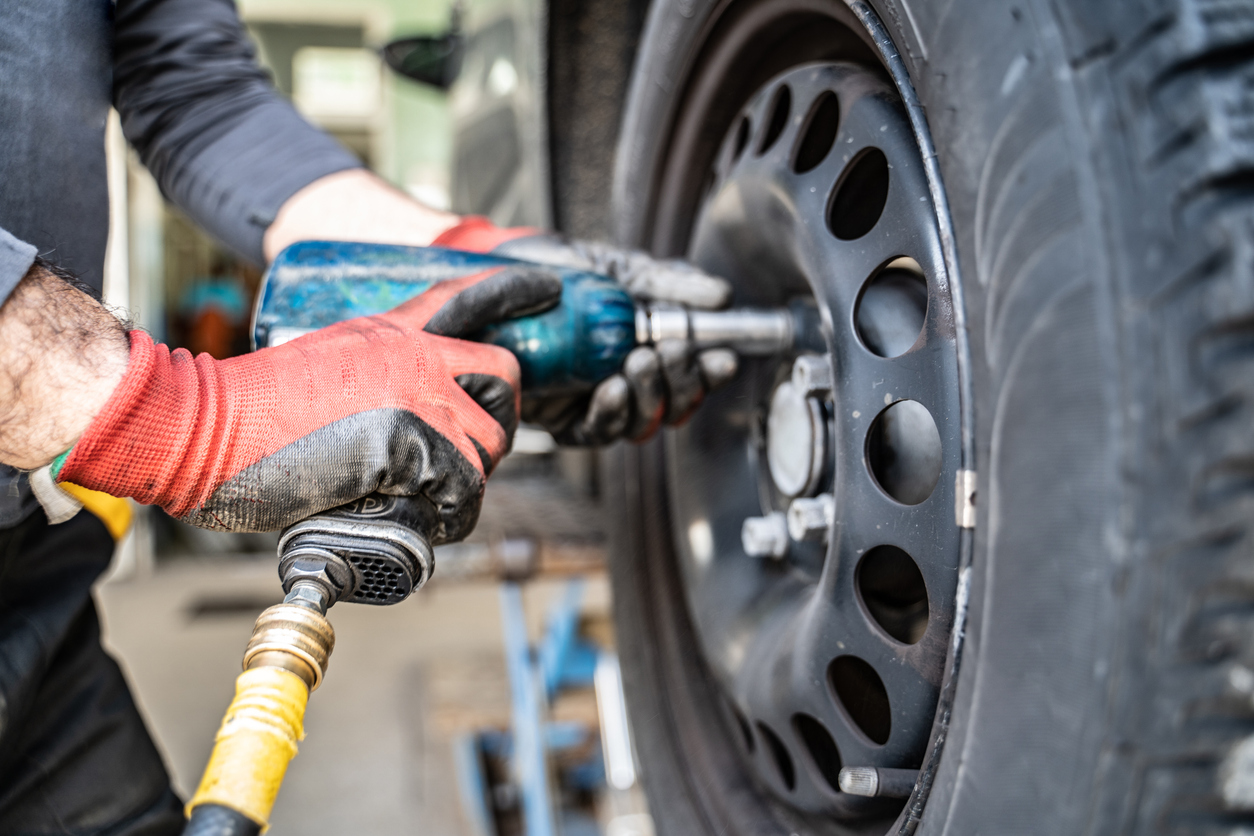
Heavy-duty impact wrenches are valued for their ability to loosen stuck nuts and bolts. While they used to require the noisy company of a compressor, cordless versions offer a quieter option that’s easier to set up and transport. However, even without a compressor, they can still be as loud as 111 dBA.
Quieter alternative: For less noise, consider a brushless version like this Makita 18V Cordless Impact Wrench, a favorite in our tested guide to the best impact wrenches.
RELATED: The Best Quiet Air Compressors for Low-Volume Workspaces, Tested
6. Angle Grinder: 109 dBA
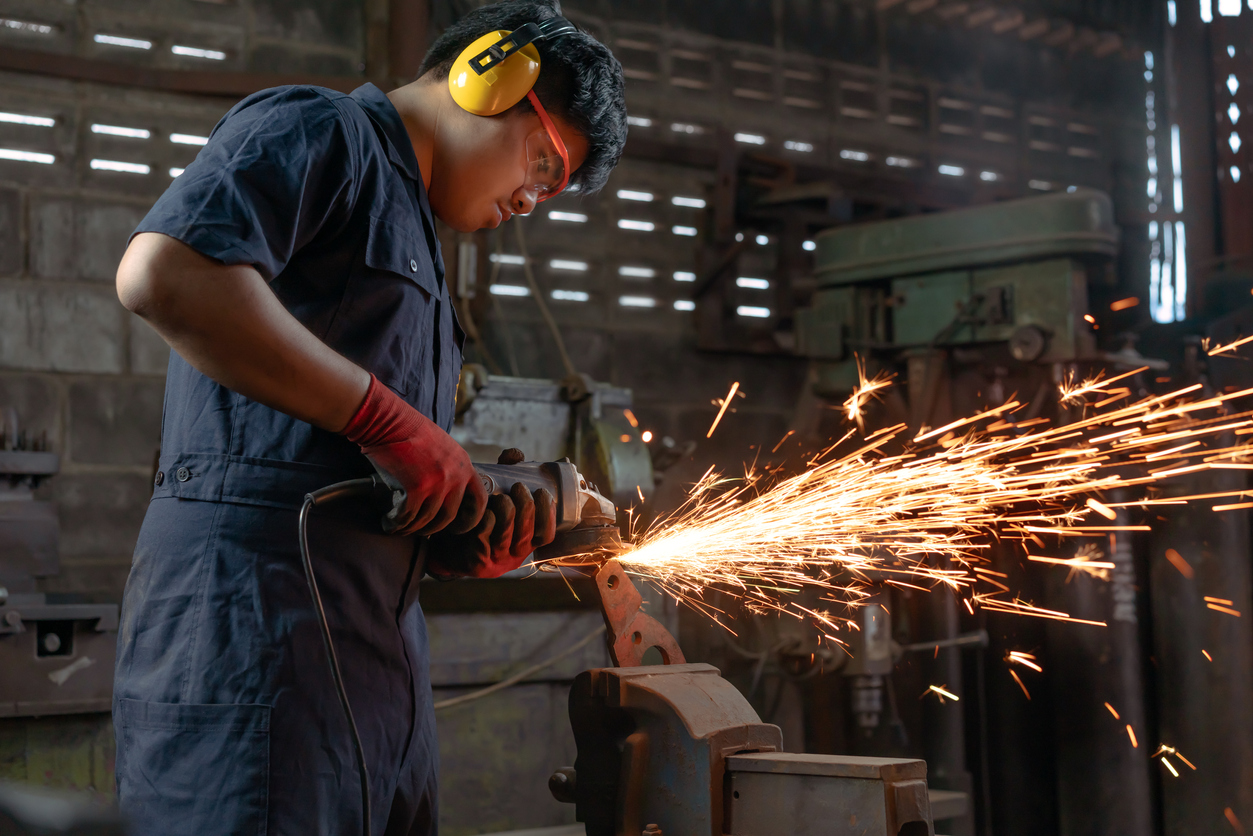
Any tool with the word “grinder” in its name has the potential to be noisy, and an angle grinder is no exception. This grinder is used for cutting metal, tile, and wood, and its motor rotates a disc with an abrasive edge that makes it a must-have for tough jobs. It can be as loud as 109 dBA, which is like being at a rock concert, and cutting metal or other tough material can increase the sound levels even further. The good news is there are models that are quieter.
Quieter alternative: Using a low-noise grinding wheel and a smaller grinder like the Makita 18V LXT Brushless 5-inch Angle Grinder, a favorite in our tests of the best angle grinders, can reduce levels by 10 dBA.
7. Jigsaw: 102 dBA
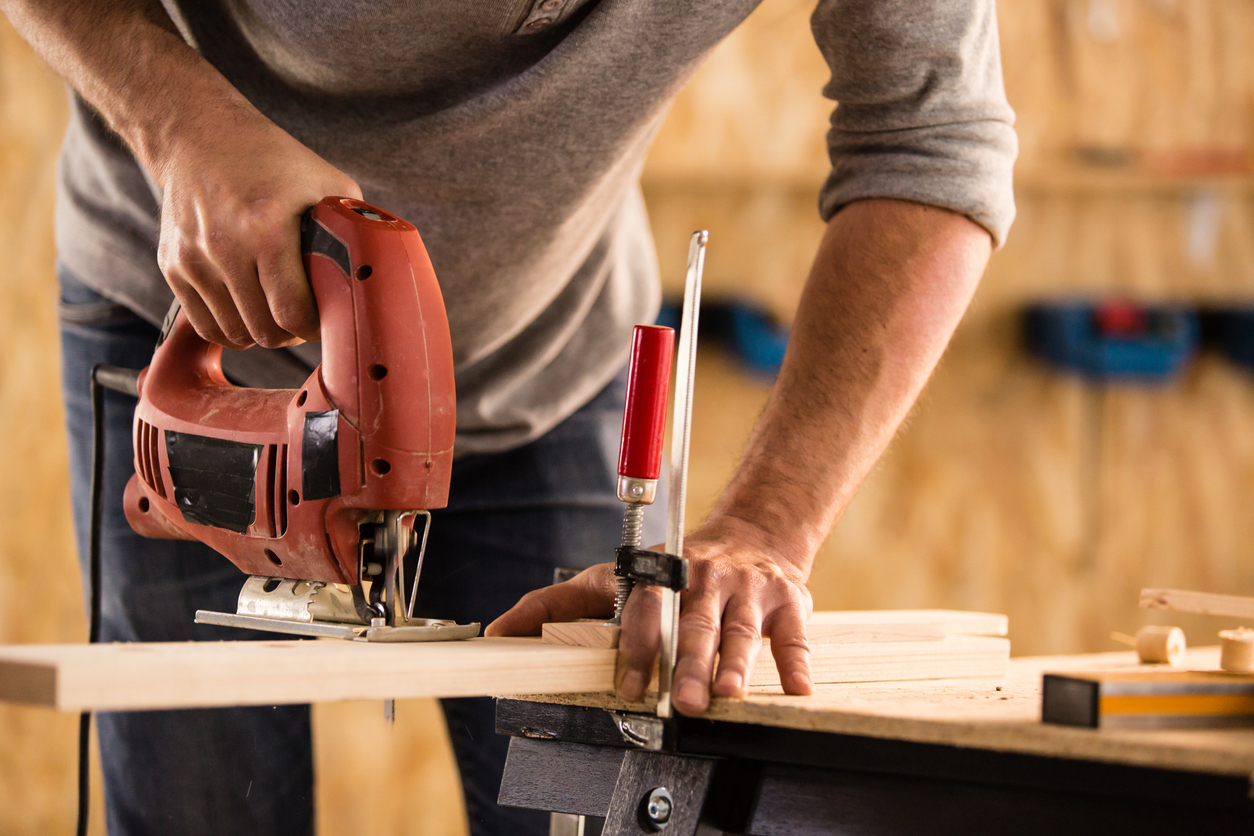
Used for plunge cuts, creating curves or holes, and trimming lumber, a jigsaw is a portable and versatile tool. When well maintained, a jigsaw produces about 100 dBA, which is the same level of noise as a hair dryer or a gas-powered lawn mower. If you hear a squealing sound or a new grinding noise, the bearings, gears, or carbon brushes may need some attention.
Quieter alternative: For a quieter option, look for a brushless version with a soft start like the Milwaukee M18 Jigsaw, a favorite in our guide to the best jigsaws tested this year.
RELATED: The Best Power Tool Sets for Your Needs and Budget, Tested
8. Drill: 99 dBA

One of the most common tools in a homeowner’s collection, the drill is used to create holes with countersinks, auger bits, and paddle bits, and also to fasten screws. Drills are available in a range of power, torque, and runtimes, and factors like a drill’s speed and the type of material being drilled through can affect the amount of noise generated.
Quieter alternatives: Because there’s less friction, brushless drills like the DeWalt 20V Max Drill, a favorite in our tests of the best cordless drills, tend to be quieter. Another contender, the Milwaukee M18 drill, has a brushless motor and uses a hydraulic oil drive, which results in less vibration and 50 percent less noise.
RELATED: How to Use a Drill
9. Orbital Sander: 97 dBA
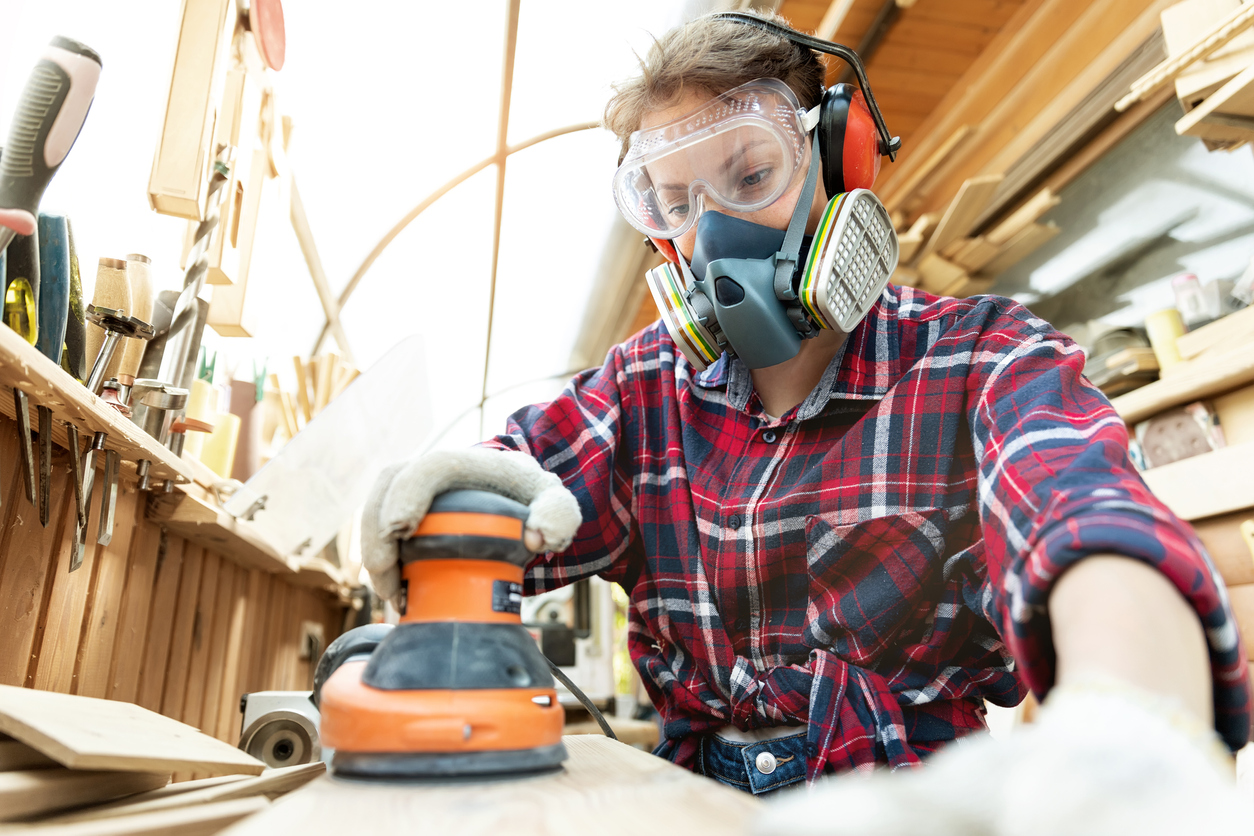
The disc of a random orbital sander spins as it moves in small ellipses to remove material from a surface. It’s a particularly helpful tool when a wood’s grain doesn’t run in just one direction. The random spin of the sander also helps to reduce the likelihood of leaving sanding marks. Applying too much pressure while using an orbital sander can raise the noise level because it increases friction and makes the tool work even harder.
Quieter alternative: A sander with variable speed like the Makita Random Orbit Sander, a favorite in our tested guide to the best random orbital sanders, can be quieter because it offers the option of working at lower speeds.
10. Cordless Screwdriver: 94 dBA
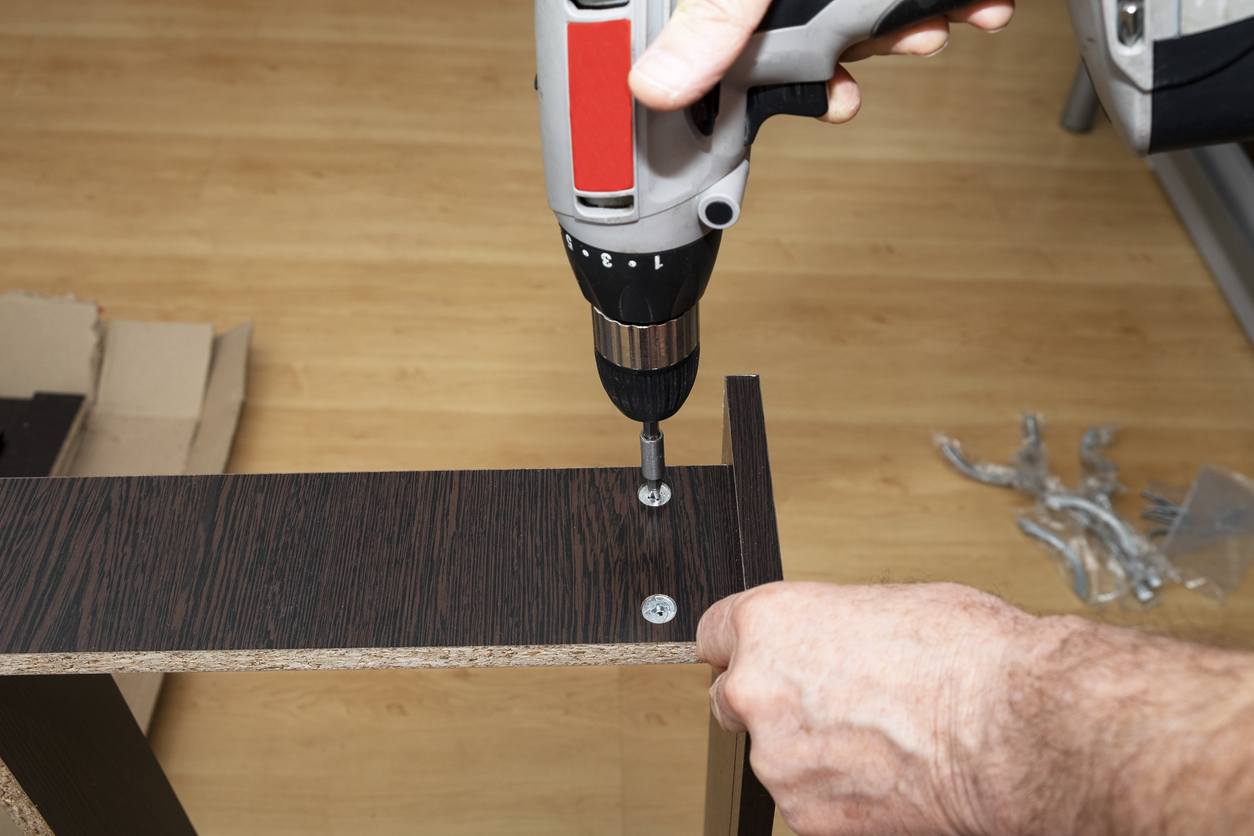
Handy to keep in the workshop or in a kitchen drawer, the cordless screwdriver is usually much smaller and lighter in weight than a drill. It can fit into tighter spots and is often used to hang wall art or fix little things around the house. The speed, torque, and type of material can affect the amount of noise the tool produces.
Quieter alternative: Consider a cordless screwdriver with adjustable speed like the DeWalt 8V Max screwdriver, a favorite in our researched guide to the best cordless screwdrivers, so you can vary the speed (and the noise level) according to the requirements of the job.
